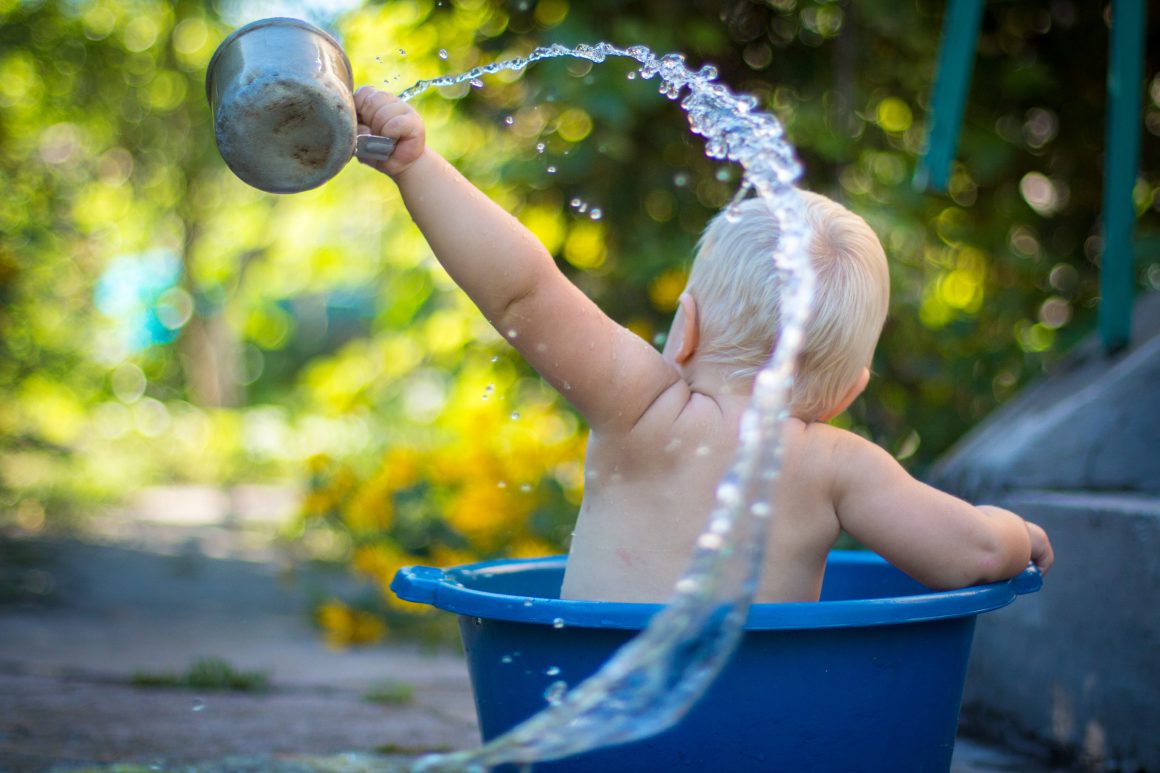Guest post by Jane Garbutt.
The bathroom is one of the more hazardous rooms in your home for your child. According to studies, about 43,000 American children are injured in bathrooms and showers every year, with injuries to children four and younger accounting for more than half of the injuries. What can new parents do to child-proof their bathroom and ensure their child’s safety?
Supervision Is Key
Here’s your number one bathroom safety rule: never leave a young child unattended. This may seem like a no-brainer, but you can’t leave them alone even for a moment. Infant bath seats and bath rings are just bathing aids, and don’t prevent drowning if a child is left unattended.
Even if your child is bathing in a shallow bathtub, you shouldn’t let your guard down. Babies can drown in just an inch of water, so if you really have to answer the phone or doorbell, wrap up your child in a towel and take him or her with you. When bathing your child, always keep them supported. It’s also a good idea to install a safety latch or doorknob cover to prevent your child from entering the bathroom unsupervised.
Prevent slips and falls by installing slip-proof strips on the bottom of your bathtub and place a cushioned cover over the faucet to prevent bumps. After the bath, make sure to drain the tub and close the door behind you. Though it’s unlikely that your child could fall back into the bath, it can happen. Make it a habit to empty the tub as soon as you lift your child out from the bath.
Check Water Temperature
Prevent scalding by adjusting your water heater so that the temperature doesn’t go higher than 120 degrees Fahrenheit or 48.9 degrees Celsius. A lower temperature can drastically reduce the chance of scalding, as it takes just three seconds for a child to get a serious burn. When bathing your child, place a towel over the faucet so hot water doesn’t accidentally come out. You could also install an anti-scalding device on your faucets.
Before bathing your child, test the water with your elbow, as your elbow should be able to feel temperature better than your hand. If you want something more reliable, get a water thermometer. Once your child is old enough to turn faucets, teach him or her to always start with cold water before the hot.
Keep Danger Out Of Reach
The bathroom is full of hazardous cleaning products, medicines, and tools, so keep these well out of your child’s reach. Keep medicines in child-safe containers, but remember that just because they have safety caps they aren’t 100% childproof. You still have to store these in a high, locked cabinet, and keep your frequently used items (such as toothpaste, shampoo, soap) in another cabinet.
If you use electric appliances like hairdryers and razors in the bathroom, always unplug them after use and secure them in a cabinet. You can also ask your electrician to install a ground-fault circuit interrupter, which is designed to shut off a circuit when it detects that current is flowing abnormally, such as when an appliance falls into the water. By staying vigilant, you can reduce the chances of bathroom accidents and keep your whole family safe.
Photo by Lubomirkin on Unsplash.
Terms and Conditions
All content provided on this blog is for informational purposes only. The owner of this blog makes no representations as to the accuracy or completeness of any information on this site or found by following any link on this site. The owner will not be liable for any errors or omissions in this information nor for the availability of this information. The owner will not be liable for any losses, injuries, or damages from the display or use of this information. This policy is subject to change at any time.

